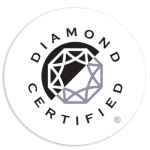Replacing Your Attic Insulation
If it’s time to upgrade the insulation in your home, one of your first determining factors is the R-value. The article below is designed to help you make an informed decision. It explains the top factors to consider when replacing your attic insulation or the insulation anywhere in your home.
How Often Should Your Attic Insulation Be Replaced?
Insulation can last 80 to 100+ years, but it will need to be retrofitted every 10 to 15 years. One of the most common reasons to replace it sooner is to upgrade the R-value to improve energy efficiency. Also, to replace it after a leak, rodent infestation, or construction.
Your entire home should be inspected annually as part of your preventative maintenance plan. This will identify most areas of opportunity before they become a costly concern.
Be sure to inquire about the quality and placement of your insulation during your next home inspection.
Why Add or Replace Your Home Insulation?
Uninsulated attics, basements, and crawlspaces leave your home warmer in the summer and colder in the winter.
Upgrading or adding insulation rapidly:
- Improves energy efficiency by an average of 10 to 15%.
- Reduces your monthly and annual energy spending.
- Makes your home more comfortable.
- Reduces the demand on your HVAC system.
- Adds a light layer of soundproofing.
- Is an essential part of your roof and home ventilation.
What Is R-Value?
How well your insulation performs depends on its thermal resistance—or R-value. The suggested R-value varies by geographic location. In the Greater Bay Area, the standards are as follows:
- R-30 to R60 for currently uninsulated areas.
- R-25 to R38 for doubling to 3 to 4 inches in thickness.
- R-19 to R25 for flooring.
Thermal resistance can degrade over time, which is one of the reasons why you should prioritize annual home inspections.
Now that you understand R-Value and why replacing your attic insulation is important, let’s explore your top options.
#1 Fiberglass
These are the age-old batts or rolls that often come to mind. They are a cost-effective option, that is typically $0.20 to $0.60 per square foot. The lower the thermal resistance, the lower the cost.
Fiberglass is easiest to install in attics and basements with standard-spaced joists and beams. The batts and rolls can be cut to size to ensure it performs to specs.
While still a popular choice, fiberglass is not eco-friendly. It’s neither rodent-proof or moisture resistant. It also sheds during installation and over time. This is problematic as fiberglass particles irritate the skin, lungs, and GI tract. This is why full PPE is worn during installation.
#2 Loose-Fill Insulation
Loose-fill insulation is the next step up from fiberglass. It’s an eco-friendly option made from recycled wood and paper. The cost runs at around $1 per square foot.
The loose-fill is installed by blowing the particles into place. This makes it an ideal option for spaces that have a non-standard architectural design. However, it is flammable so it can’t be utilized around recessed light fixtures.
Another downside is that the materials are highly susceptible to moisture and water damage. You’ll have to replace portions of your loose-fill attic insulation with even the tiniest roof or vent leak.
#3 Spray Foam Insulation
Spray foam is one of the most popular options. It is versatile, eco-friendly, and has a high R-value. You must decide between open-cell or closed cell-spray. Closed-cell has the added benefit of creating a moisture barrier. Newer generations are even rodent-proof. Open-cell costs around $1.25 per square foot. Close-cell costs around $1.50 per square foot.
Spray foam is most often made from long-lasting polyurethane that is sprayed to fit even the most complex architectural designs. With spray foam, even the tiniest gaps and hard-to-reach spaces can be sealed.
#4 Mineral Wool
Sometimes referred to as rock wool, this is your most eco-friendly option. It’s made from batts or blankets filled with mineral wool and recycled materials. Mineral wool is vegan and is not an animal byproduct, it is made by melting rocks and minerals to 2,900 degrees Fahrenheit. The byproduct is then spun into a wool-like material. It costs $0.80 per square foot.
Mineral wool is easy to cut and shape to size and is moisture and fire rated. Its ability to resist fire and flames makes it a popular choice in areas susceptible to wildfires.
It can get wet without the need to be replaced, but the batts or blankets may need to be removed to ensure they dry fully.
Need Help Replacing Your Attic Insulation?
If you live in or around the Bay Area and would like to have your attic, crawlspace, or basement inspected, insulated, or re-insulated—we invite you to reach out to AtticPros. We are a top-rated company that is licensed, bonded, and insured. Our expert technicians are friendly and professional and will talk you through the best options to achieve your objectives.

